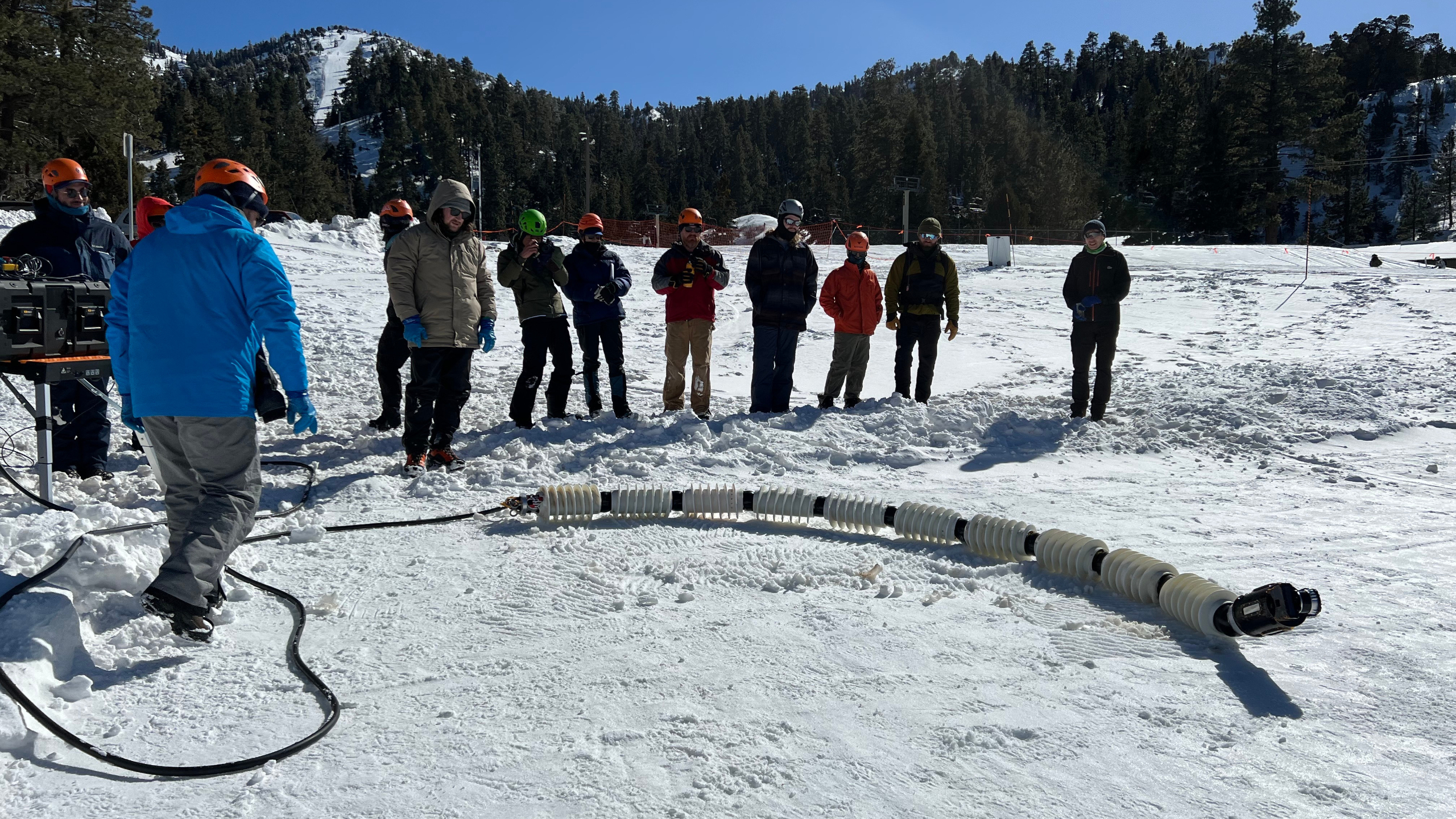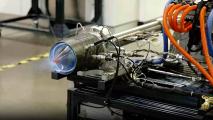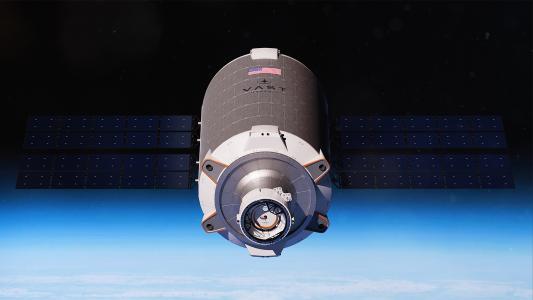NASA is designing a one-of-a-kind snake robot to hunt for life on a distant moon — and now you can watch it slither across challenging terrain on Earth, as it trains for a harsh mission in deep space.
The challenge: Theoretically, Saturn’s moon Enceladus has all the ingredients needed for life as we know it — liquid water, the right chemistry, and a heat source — making it one of the most promising leads in the hunt for life elsewhere in the solar system.
“The idea for EELS is the ability to do it all.”
Matthew Robinson
It also has more than 100 geysers spewing water vapor from narrow fractures in the icy crust that covers its ocean. Research suggests there could be hydrothermal vents below these fractures, and on Earth, those are hot spots for life.
Studying those vents will be a challenge unlike any NASA has faced before. Every rover it has sent to explore another body so far has been a variation of a wheeled bot that just rolls over solid ground, and that isn’t going to work on Enceladus.
The idea: To meet this unprecedented challenge, researchers at NASA’s Jet Propulsion Laboratory (JPL) are designing an unprecedented robot: the Exobiology Extant Life Surveyor (EELS).

The 220-pound robot is snake-like, with 10 identical segments adding up to a total length of 13 feet. When the segments rotate, screw threads on them propel the robot forward, whether it’s on the ground, ice, or in the water.
“Though some robots are better at one particular type of terrain or other, the idea for EELS is the ability to do it all,” said Matthew Robinson, EELS project manager.
What’s new? Since building the first EELS prototype in 2019, the JPL team has experimented with many different threads on a variety of surfaces.
They’ve now released a video highlighting the bot’s remarkable ability to slither across ice at an indoor skating rink, sand at a Mars simulation, and snow at a “robot playground” created at a California ski resort.
Smart bot: Ensuring that EELS can physically navigate difficult terrain is just half the battle. Due to the communication lag (it takes light 60 to 90 minutes to travel from Earth to Saturn, depending where they are in their orbits), the snake robot will also need to operate on its own.
The JPL team has equipped EELS with four pairs of stereo cameras and lidar it can use to create a 3D map of its surroundings. Navigation algorithms can then decide which route the snake robot should take and which of several (in-development) “gaits” it should use.
“When you’re going places where you don’t know what you’ll find, you want to send a versatile, risk-aware robot that’s prepared for uncertainty — and can make decisions on its own,” said Robinson.
“There is no textbook about how to design an autonomous snake robot to boldly go where no robot has gone before.”
Hiro Ono
Looking ahead: The EELS researchers hope to finish development on the snake robot in the fall of 2024 and then submit a proposal to send it to Encladeus. If approved, it would take 12 years for EELS to reach its destination from the time of launch.
For now, the team will continue developing and testing their one-of-a-kind robot.
“There are dozens of textbooks about how to design a four-wheel vehicle, but there is no textbook about how to design an autonomous snake robot to boldly go where no robot has gone before,” said Hiro Ono, EELS principal investigator.
“We have to write our own,” he continued. “That’s what we’re doing now.”
We’d love to hear from you! If you have a comment about this article or if you have a tip for a future Freethink story, please email us at [email protected].


